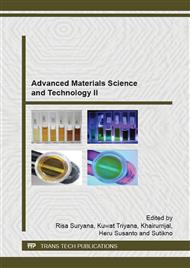p.24
p.27
p.31
p.35
p.42
p.46
p.55
p.61
p.65
The Effect of a Hydrophobic Coating Material on Friction in a Micro-Slider Bearing: A Numerical Analysis
Abstract:
The use of conventional lubricant such as hexadecane and toluene in micro-bearings has shown poor performance due to their hydrophilicity. High friction between the lubricated surfaces could lead to the occurrence of stiction which limits the functionality of a micro-bearing. In order to assess this strategy, a lubrication model of a micro-slider bearing with modified surface was used to simulate the technology. Friction, hydrophobic zone and hydrophobicity coefficient were evaluated based on the modified Reynolds equation. Results showed that in general the application of a hydrophobic coating has a significant improvement in reducing friction. Further, particular care must be taken in choosing the hydrophobic coating zone; an inappropriate choice of this zone will lead to a deterioration of the friction. This finding may have useful implications to accelerate the development of micro-bearings.
Info:
Periodical:
Pages:
42-45
Citation:
Online since:
August 2015
Keywords:
Price:
Сopyright:
© 2015 Trans Tech Publications Ltd. All Rights Reserved
Share:
Citation:


